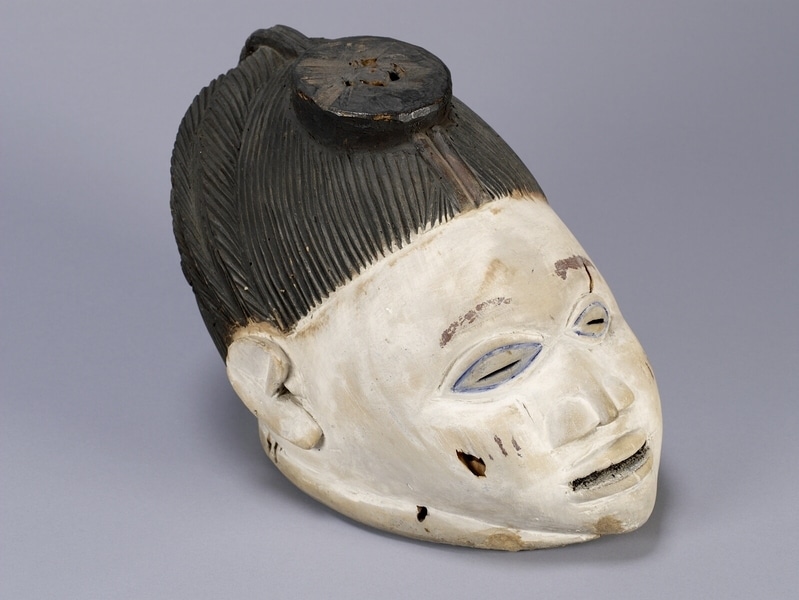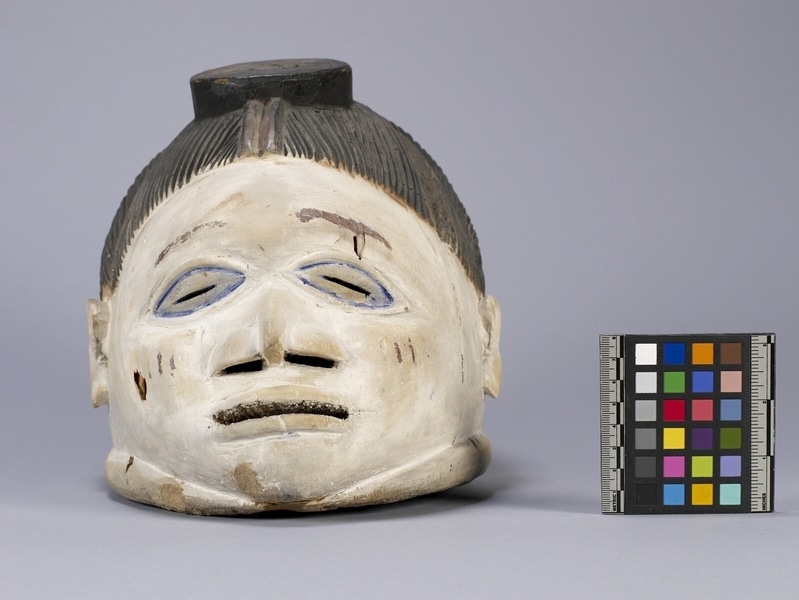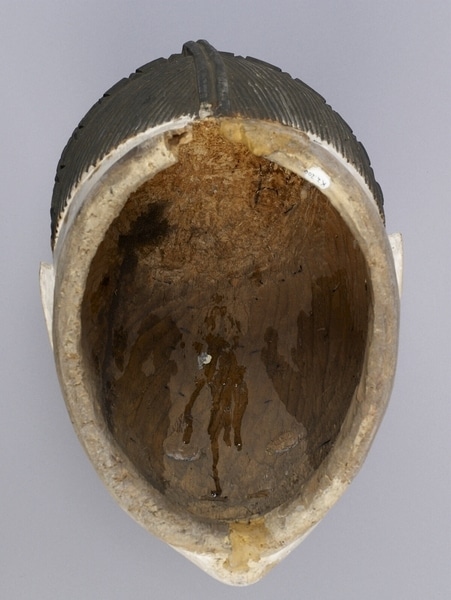Gelede Mask Item Number: K2.200 from the MOA: University of British Columbia




Description
Mask with a white face and a ridged coiffure painted black. There is a disc-like shape at the front centre of the hairdo. The centres of the eyes are blue.
History Of Use
The gélède mask is worn more like a headdress, on top of the head, by male dancers. The masks are worn during Yoruba Gelede festivals which honour women, both living and dead, in particular the powerful "Mothers" (awon iya wa), a group that includes female ancestors and deities, as well as elderly women of the community. When dancers perform the Gelede dance they are displaying the powers of their female ancestors, who are considered to the beginning of the nation, makers of community and the protectors of children. They have the ability to affect the wellbeing of individuals or the community in positive and negative ways. The Gelede ceremony is divided into two parts: the efe, which takes place at night and features a humorist praying for the community, and the ijo osan, the daytime dance that is commonly referred to as Gelede.
Iconographic Meaning
The colour white is associated with multiple deities, including Iya Nla (the Great Mother deity), Obatala (artist deity, responsible for creating humans) and Orunmila or Ifa (divination deity). The colour white also signifies the mask wearers are connections between the physical and spirit worlds.
Cultural Context
Gelede festival dances.
Item History
- Made in Nigeria
- Owned by Berkeley Galleries Ltd. before March 1960
- Received from Berkeley Galleries Ltd. (Seller) and Leon & Thea Koerner Foundation (Funding source) during March 1960
What
Who
- Culture
- Yoruba
- Previous Owner
- Berkeley Galleries Ltd.
- Received from
- Berkeley Galleries Ltd. (Seller) and Leon & Thea Koerner Foundation (Funding source)
Where
- Holding Institution
- MOA: University of British Columbia
- Made in
- Nigeria
When
- Ownership Date
- before March 1960
- Acquisition Date
- during March 1960
Other
- Condition
- poor
- Current Location
- Case 98
- Accession Number
- 0023/0049